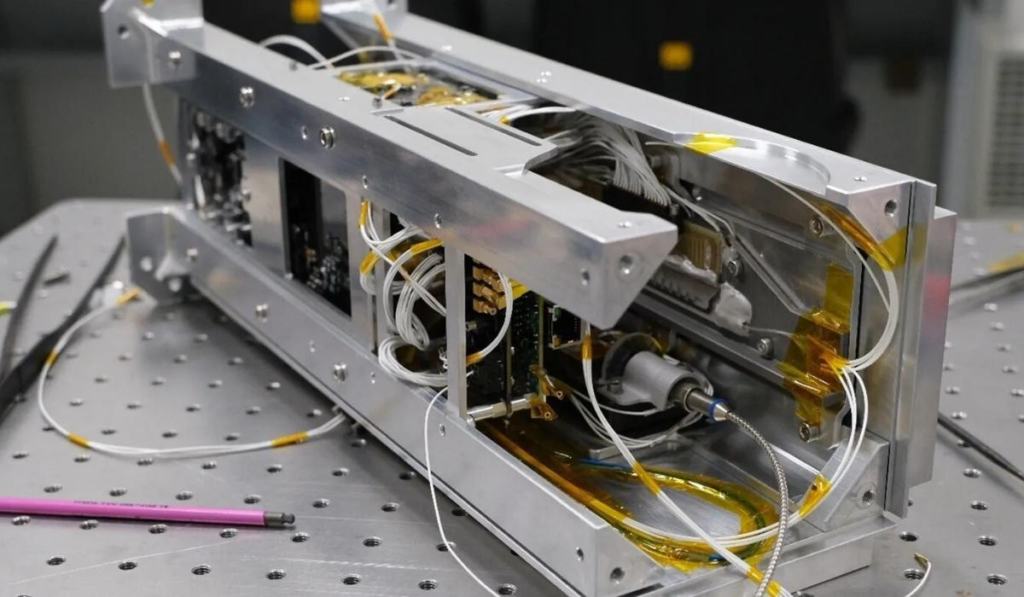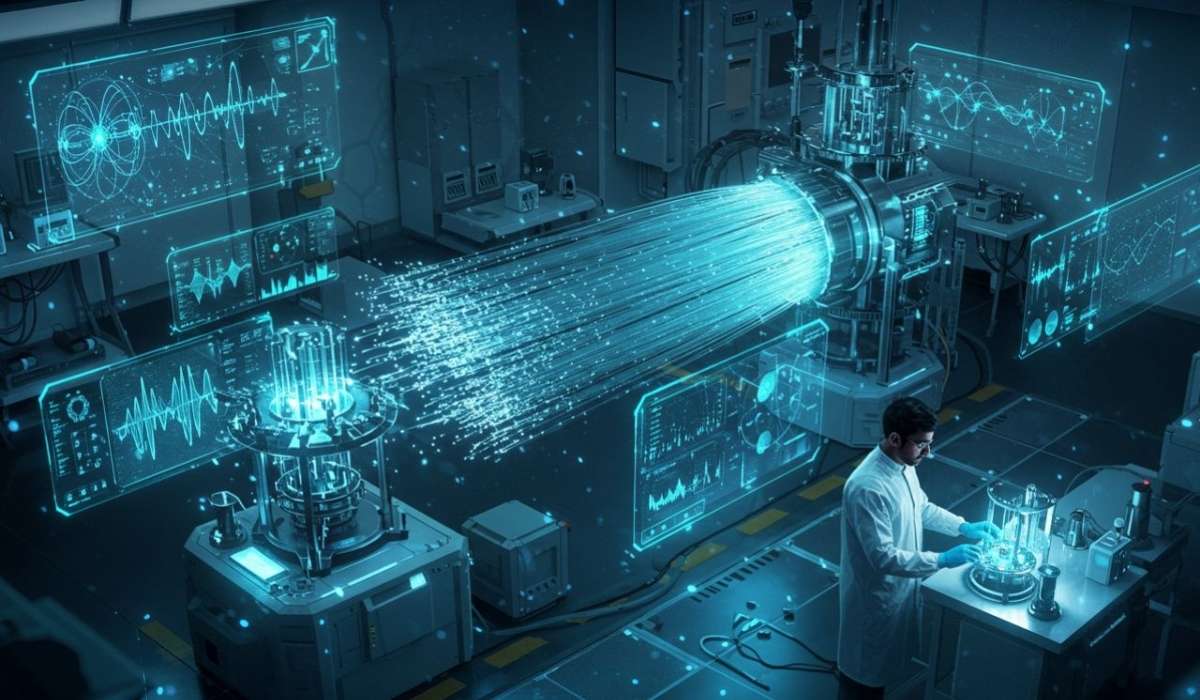Transphotonen represent a revolutionary concept in modern physics, merging the realms of quantum mechanics, photonics, and advanced energy systems. These unique particles, often described as modified or transmutable photons, have properties that distinguish them from conventional photons, such as the ability to interact with matter in ways previously thought impossible. While traditional photons are the basic units of light, responsible for electromagnetic radiation across the visible and invisible spectrum, transphotonen possess enhanced or altered properties that enable them to carry information, energy, or quantum states over distances with minimal loss. The scientific community has only recently begun to explore.
Understanding transphotonen requires a fundamental shift in how we conceptualize light and its interactions with the physical universe. Unlike regular photons that are limited by classical electromagnetic constraints, can exhibit characteristics that make them adaptable to specific experimental or technological needs. For instance, their ability to interact with quantum fields and potentially influence matter at the subatomic level opens new avenues for research in particle physics and materials science. These particles challenge long-held assumptions about the behavior of light and force scientists to rethink established theories regarding energy transmission, photon entanglement, and the boundaries of electromagnetic interactions.
The Physics Behind Transphotonen
At the core of the transphoton concept lies advanced quantum mechanics and photon theory. Unlike standard photons, which travel at the speed of light and exhibit wave-particle duality, transphotonen are theorized to possess additional quantum attributes that allow for more controlled interaction with external fields. This includes potential modulation of energy states, selective absorption, and even the ability to carry encoded quantum information across long distances without degradation.
Research indicates that transphotonen may interact with virtual particles in a vacuum differently than normal photons, leading to phenomena that could revolutionize our understanding of energy transfer. These interactions might include temporary changes in the particle’s mass-energy equivalence or shifts in momentum that allow for novel manipulation techniques. Scientists studying high-energy photon behavior have suggested that transphotonen could serve as a bridge between classical photonics and emerging quantum technologies, providing a medium for controlled experiments in areas previously limited by conventional photonic limitations.
Potential Applications in Communication Technology

One of the most exciting potential applications of transphotonen is in the field of communication technology. With the increasing demand for faster, more reliable, and more secure data transmission, conventional electromagnetic waves are approaching theoretical limitations. Transphotonen could provide a breakthrough by enabling high-fidelity transmission of information through quantum channels, potentially surpassing current fiber-optic or wireless systems.
Because of their unique properties, transphotonen could carry complex quantum states, allowing for ultra-secure communication protocols that are resilient against interception or signal degradation. In addition, their potential for low-energy transmission could significantly reduce the energy footprint of data networks, which is becoming an increasingly critical concern in the era of large-scale data centers and cloud computing. This opens the possibility of developing global quantum communication networks powered by, fundamentally altering the way humans transmit and receive information.
Implications for Medical and Imaging Technologies
Transphotonen also hold promise in the realm of medical imaging and therapeutic technologies. Traditional imaging techniques, such as X-rays or MRI, rely on photon interactions that sometimes expose patients to significant levels of radiation or require extensive equipment. The unique properties of transphotonen could allow for high-resolution imaging at lower energy levels, reducing potential risks while improving diagnostic capabilities.
Moreover, the ability of transphotonen to interact with subatomic particles in specific ways may enable targeted therapies for diseases like cancer. By controlling the energy states and interaction patterns of, it could become possible to selectively disrupt malignant cells without affecting surrounding healthy tissue. This level of precision in medical applications represents a major leap forward in both safety and effectiveness, suggesting that could be central to the next generation of medical technology.
Energy Transfer and Storage

Another critical area of research involves the role of transphotonen in energy transfer and storage. Conventional methods of energy transmission often face losses due to resistance, absorption, or scattering., with their potentially enhanced interaction control, could allow for near-lossless energy transfer across distances, which would be a transformative advancement for global energy systems.
The ability to manipulate these particles to store energy at a quantum level also opens the door to revolutionary battery and capacitor designs. By harnessing the unique properties of transphotonen, engineers may be able to create energy storage systems that are smaller, more efficient, and capable of holding significantly more energy than current technologies. This could have implications not only for consumer electronics but also for large-scale industrial energy systems and renewable energy infrastructure.
Challenges and Scientific Controversies
Despite their potential, transphotonen research faces significant challenges. Theoretical models are still being developed, and experimental verification is complex due to the extremely small scales and high precision required. Many in the scientific community are cautious, emphasizing that while transphotonen offer exciting possibilities, rigorous testing and peer-reviewed studies are essential to confirm their existence and functionality.
Some controversies arise from the conceptual nature of transphotonen. Critics argue that certain experimental results attributed to could be explained by more conventional photonic phenomena or measurement errors. This skepticism is healthy for scientific progress, as it ensures that claims about transphotonen are thoroughly scrutinized and validated before widespread acceptance. Ongoing research labs around the world are designing experiments to isolate behavior, focusing on reproducibility and accuracy to ensure that the results are reliable.
Future Research Directions

Looking ahead, the study of transphotonen is poised to intersect with several cutting-edge fields, including quantum computing, advanced materials science, and artificial intelligence. One of the most promising directions involves integrating into quantum computing architectures, where their ability to carry and manipulate quantum information could significantly enhance processing speeds and efficiency.
In materials science, transphotonen could be used to probe the internal structures of matter at unprecedented resolutions, leading to the discovery of new materials with unique properties. In AI and machine learning, advanced sensors using might provide more precise data collection capabilities, enhancing the accuracy of models in fields ranging from climate science to autonomous systems. The potential for interdisciplinary applications highlights the transformative nature of research, making it a key focus for the next several decades of scientific exploration.
Ethical and Societal Implications
The deployment of -based technologies will inevitably raise ethical and societal questions. As with any powerful technology, there is potential for misuse, whether in surveillance, military applications, or economic monopolies. It is therefore critical that researchers, policymakers, and ethicists work together to establish guidelines and regulations that ensure the safe and equitable development of transphotonen technologies.
Additionally, the societal impact of in medicine, energy, and communication could be profound. Equitable access to these technologies will be essential to prevent widening disparities between technologically advanced regions and underdeveloped areas. Public understanding and engagement in transphotonen research can help ensure that the benefits of this emerging field are distributed fairly and responsibly.
Conclusion

Transphotonen represent a frontier in modern science with the potential to reshape technology, medicine, energy systems, and communication. While research is still in its early stages, the theoretical and experimental exploration of these particles is already yielding insights that challenge conventional understanding and open doors to transformative applications. As studies progress, transphotonen may become central to the next wave of scientific and technological breakthroughs, highlighting the importance of continued research, collaboration, and ethical consideration. Their promise lies not only in their unique physical properties but also in the opportunities they provide to redefine human interaction with the natural world at a fundamental level.
Frequently Asked Questions
1. What are transphotonen?
- Transphotonen are theoretical or experimentally studied particles similar to photons but with enhanced or altered quantum properties, enabling unique interactions with matter and energy.
2. How are transphotonen different from regular photons?
- Unlike regular photons, transphotonen may carry quantum states, interact differently with virtual particles, and allow controlled manipulation for applications in communication, medicine, and energy systems.
3. What are the potential applications of transphotonen?
- They could revolutionize communication technology, medical imaging, energy transfer, quantum computing, and materials science.
4. Are transphotonen currently used in any technology?
- Transphotonen research is mostly experimental. Practical applications are still in development and may take years of research and testing.
5. What challenges do scientists face in studying transphotonen?
- Challenges include the need for extreme precision in experiments, verification of theoretical models, and differentiating transphotonen effects from conventional photonic phenomena.








